#Roman Emperor
Text

"The North Hertfordshire museum will now refer to the emperor Elagabalus with female pronouns.
Museum policy states the pronouns used in the displays will be those ‘the individual in question might have used themselves’ or whatever pronoun ‘in retrospect, is appropriate’."
source 1
source 2
#destiel meme#destiel meme news#world news#news#ancient rome#roman empire#roman emperor#elagabalus#rip elagabalus you were a real one#trans history#i guess#transgender#trans woman#this is pretty cool actually#now can we get the same treatment for historical persons that weren't horrifically assassinated
756 notes
·
View notes
Text

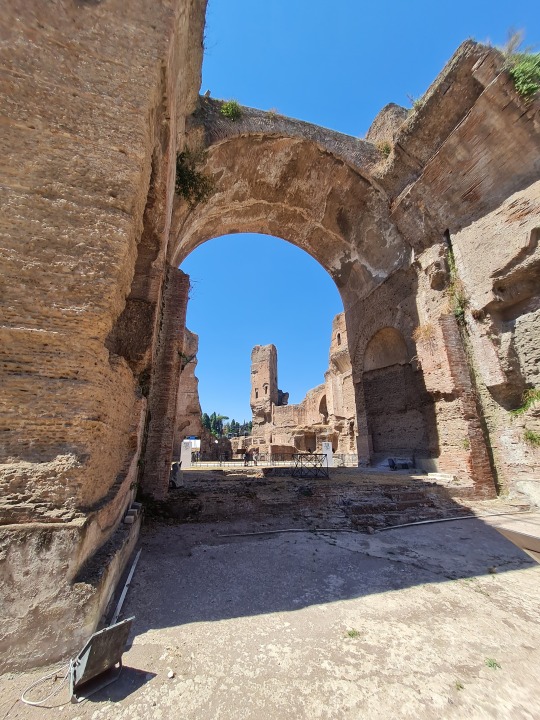

The Baths of Caracalla in Rome, Italy
The Baths were unprecedented in size: 1600 Romans could bathe at the same time. Apart from the bathing facilities, there were two libraries and there were shops, offices, gardens and even an area for sport. It simply didn't fit inside of Rome, and that is why it was built just outside of it, by the Appian Way (Via Appia).
#baths of caracalla#ancient rome#ancient history#ancientmonuments#roman empire#roman emperor#rome#italy#italia#roman architecture#architecture#architettura#ruins#history#culture#archaeology#roman archaeology#roman history#mosaic#roman mosaic#travel#traveling#travel photography#photography#wanderlust#vacation#travel tips#travel destinations#explore#.5k
956 notes
·
View notes
Text

Rome’s 'Lost' Imperial Palace 'Domus Tiberiana' Reopens
Until recently a crumbling and off-limits ruin near the famous Colosseum, the Domus Tiberiana palace — built in the first century AD and beloved by Nero — hopes to once again take its place as one of the city’s top tourist attractions.
The ancient palace sits on Palatine Hill — the city’s oldest hill, overhanging Rome —from where imperial dynasties ruled for centuries. But over the years, the site fell into disrepair and in the 1970s, the Domus Tiberiana site was shut due to the structural instability of some of the ruins. The closure left behind what many Romans described as a “black hole” in the capital’s archaeological heart.
Now, after a six-year makeover, the palace has reopened its doors as a “diffuse museum,” with findings and frescoes scattered across the site to provide visitors with an insight into the palace’s ancient grandeur.
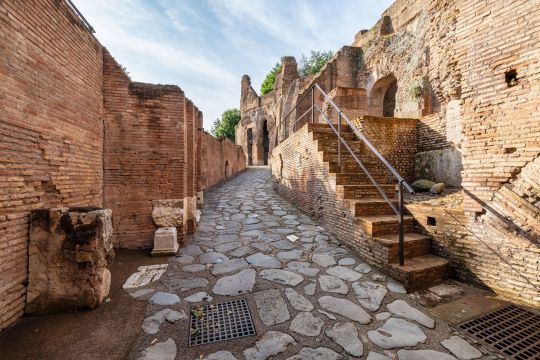
And it was grand. The Domus Tiberiana was Rome’s first imperial palace, built by the emperor Tiberius who combined and incorporated the pre-existing noble mansions built on the hill. Occupying over four hectares, the palace featured residences alongside large gardens, places of worship and rooms for the emperor’s Praetorian guard.
As the seat of Rome’s power and politics, Domus Tiberiana held a prime location, high above the Palatine and Roman Forums, offering its occupants a “balcony view of the city.” Over time, the Domus was embellished and enlarged by other emperors including Nero, who was crowned on its steps aged just 16, in 54 AD.
Alfonsina Russo, director of the Colosseum’s archaeological park (in which Domus Tiberiana falls) and lead archaeologist on the renovation, said that ancient antiquities, many exceptionally well-preserved, were unearthed during the project.
The artifacts — bright stuccos, frescoes, amphorae, potteries, looms, terracotta, and divinity statues related to the cults of Isis, Dionysius and Mithras — offer visitors a trip through time, said Russo.

“They make this place — formerly (inhabited) by aristocratic families, then Roman emperors — feel alive again,” she said. “There are seven exhibition rooms full of extraordinary finds, starting with those preceding the original construction of the palace when aristocrats lived in mansions before Tiberius subsumed them into the Domus.”
Among the newly-exposed and frescoes are some of the earliest paintings of lemons (considered an exotic fruit in Ancient Rome, as they hailed from the Far East) and a depiction of a gladiator, proving that the era’s gladiatoral games were appreciated by rich families, explained Russo.
The imperial palace remained in use until the 7th century, when it became the papal residence of John VII. In the mid-16th century, the aristocratic Farnese family — who were powerful local landowners — built the lavish Orti Farnesiani gardens on the site, adorning it with ornaments and sculptures of nymphs, satyrs and fauns.
“This monument speaks of history,” Russo added. “We have restored (Domus Tiberiana) to its past splendor, but more work lies ahead.”
Indeed, painstaking efforts have been made to blend old and new. A series of majestic, reddish-brown vaulted arches that greet visitors having been carefully reconstructed with the same materials as ancient Romans used in the past.
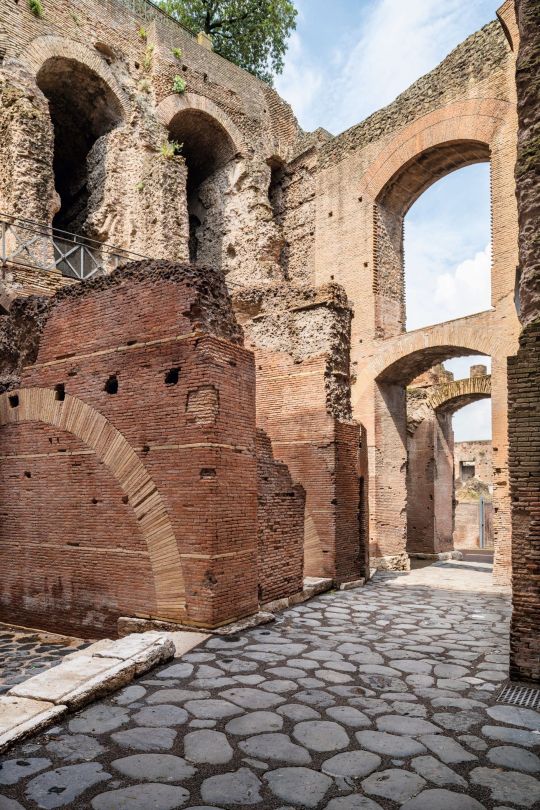
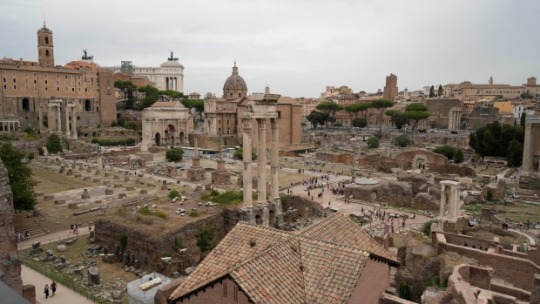
“What makes this revamped Domus unique is the architectural style,” said Russo. “We managed to use original materials to reinforce and strengthen the handmade 15-meter (50ft) tall front arches (which run alongside the palace’s) ancient paving.”
It has certainly caught the public’s attention. Since reopening at the end of September, Domus Tiberiana has attracted some 400,000 visitors, a “huge success,” said Russo, adding that she believes that this incarnation of the Domus Tiberiana offers visitors the most “evocative” visit in generations.

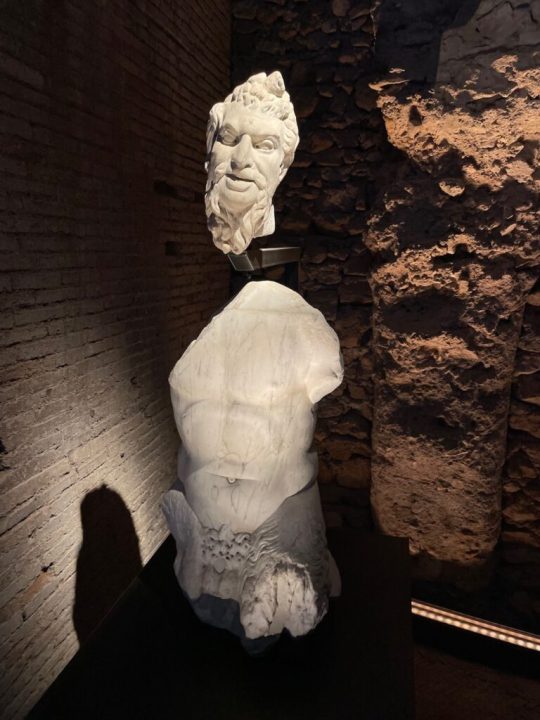
Archaeologist and scholar of ancient Rome Giorgio Franchetti saidN that, in the reopening of the Domus Tiberiana complex, Rome has “recovered a lost jewel.”
“The Palatine Hill has always been the stage of Rome’s power politics,” he said in an interview. “Tiberius likely chose this spot to build the palace as it was where his family residence stood. There aren’t many places like the Domus Tiberiana where you can really breathe the past.”
By Silvia Marchetti.
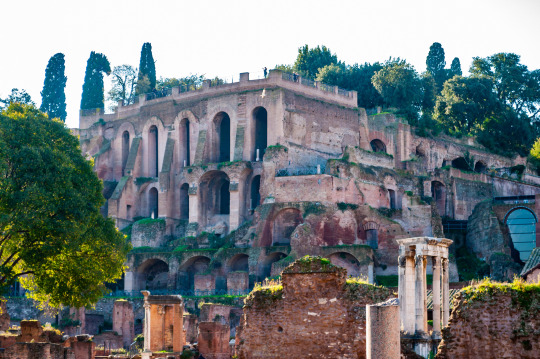
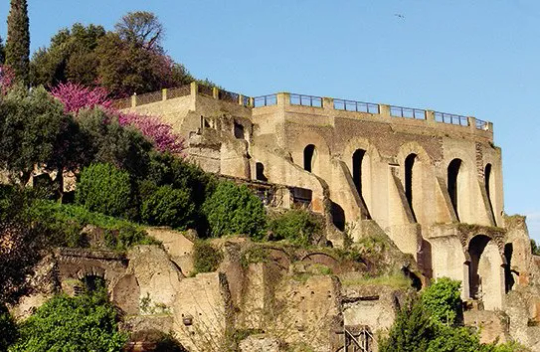
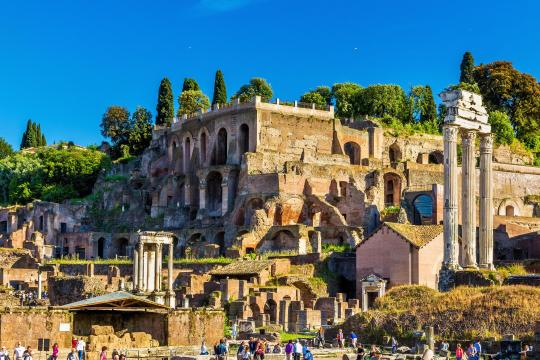
#Rome’s 'Lost' Imperial Palace 'Domus Tiberiana' Reopens#Domus Tiberiana palace#Palatine Hill#Emperor Tiberius#Emperor Nero#ancient artifacts#archeology#archeolgst#history#history news#ancient history#ancient culture#ancient civilizations#ancient rome#roman history#roman empire#roman emperor#roman art
263 notes
·
View notes
Text
I was on a sunken submarine being chased by Shrek dressed like a Roman emperor when I got to a locked door, terrified for my life I spun around to see Shrek just sorta chilling on a couch.
407 notes
·
View notes
Text
“Accept death in a cheerful spirit, as nothing but the dissolution of the elements from which each living thing is composed. If it doesn't hurt the individual elements to change continually into one another, why are people afraid of all of them changing and separating? It's a natural thing. And nothing natural is evil.”
- Marcus Aurelius
#literature#roman emperor#marcus aurelius#meditations of marcus aurelius#stoic philosophy#stoics#stoicism
303 notes
·
View notes
Text

Large fragments of the Colossus of Constantine (315 AD) depicting Roman emperor Constantine the Great - the fingertip at right is about 2.75 m (9 feet) from the base of its pedestal.
#history#culture#art#sculpture#4th century#archeology#marble#hand#art history#finger#rome#roman emperor#portrait#statue#monty python#ancient history#ancient rome#icons#head#colossus of constantine#☝🏽#constantine the great#👈🏽#palazzo dei conservatori
221 notes
·
View notes
Photo
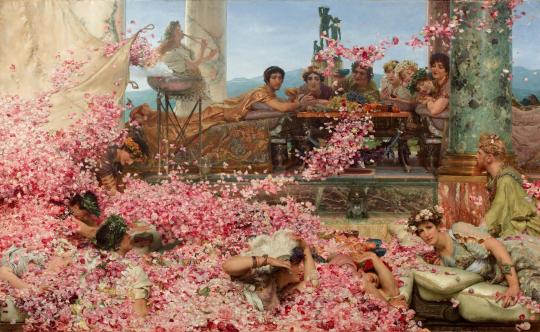
The Roses of Heliogabalus by Lawrence Alma-Tadema (1888)
#lawrence alma-tadema#art#paintings#fine art#19th century#19th century art#academism#academicism#academic art#painting#english artist#british artist#ancient rome#roman emperor#elagabalus#classic art
2K notes
·
View notes
Text
The single funniest thing I learned when studying the Roman Empire is the fact that in his life and centuries after his death, everyone calls Gaius Julius Caesar Augustus Germanicus…Caligula.
Like. That’s the nickname his dad’s coworkers gave him when he was a literal toddler. It means “little boots” because again, baby in an army camp. And that may as well have been his actual name for how often people called him it.
It’s like being called “King Slugger” for all time.
182 notes
·
View notes
Text
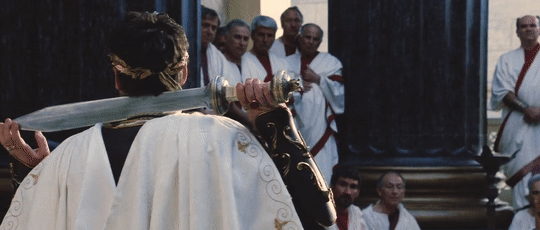
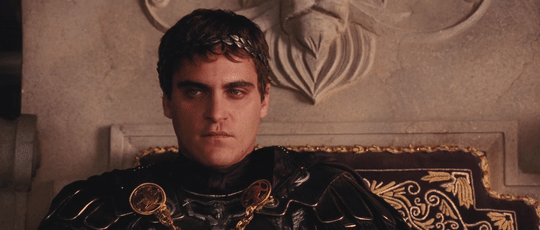

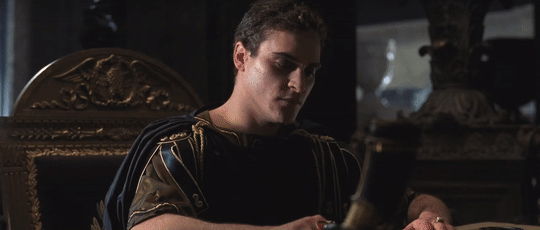
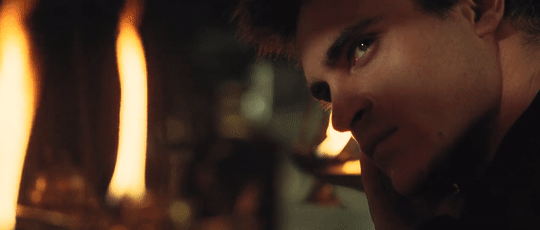
"You wrote to me once, listing the four chief virtues: Wisdom, justice, fortitude and temperance. As I read the list, I knew I had none of them. But I have other virtues, father. Ambition."
- Joaquin Phoenix as Commodus (Gladiator, 2000)
Pt. 1, Pt. 2
#Young Joaquin is so slept on fr#Best villains of all time#Commodus#Joaquin Phoenix#weak for scary men with sad eyes#Gladiator#movie gifs#Ridley Scott#Roman empire#Rome#film gifs#joker 2019#colosseum#John Mathieson#Roman Emperor#cinema#film#Russell Crowe#2000#napoleon movie#napoleon 2023
192 notes
·
View notes
Text
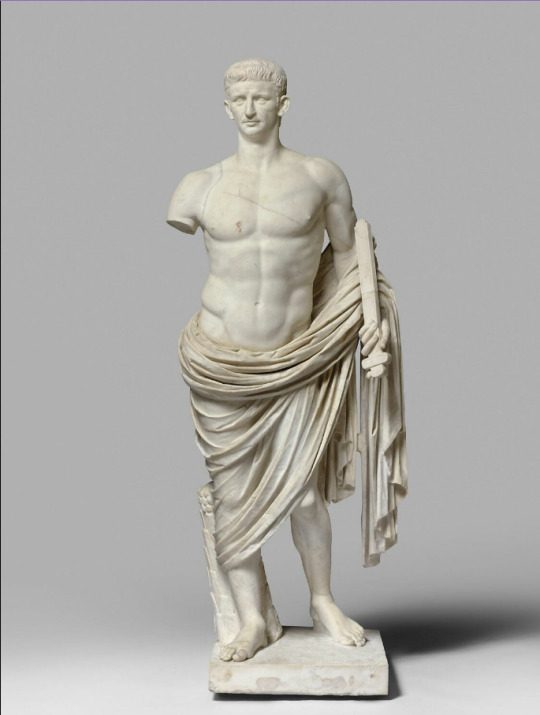
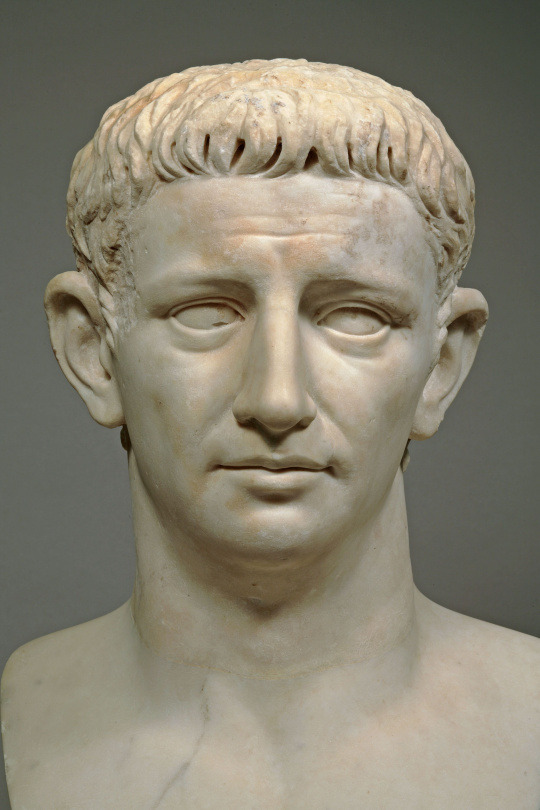
The statue of Emperor Claudius discovered in Gabii near Rome at the end of the 18th century, now in the Louvre.
#ancient rome#emperor claudius#roman empire#ancient art#julio claudian dynasty#ancient culture#ancient history#ancient civilisations#ancient statue#statue#roman emperor#tiberius claudius caesar augustus germanicus#claudius
101 notes
·
View notes
Text
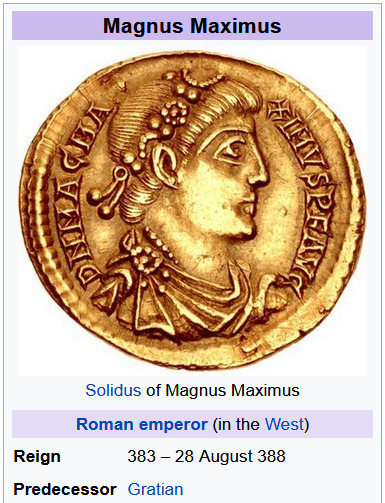
Hollywood-ass regnal name
2K notes
·
View notes
Text
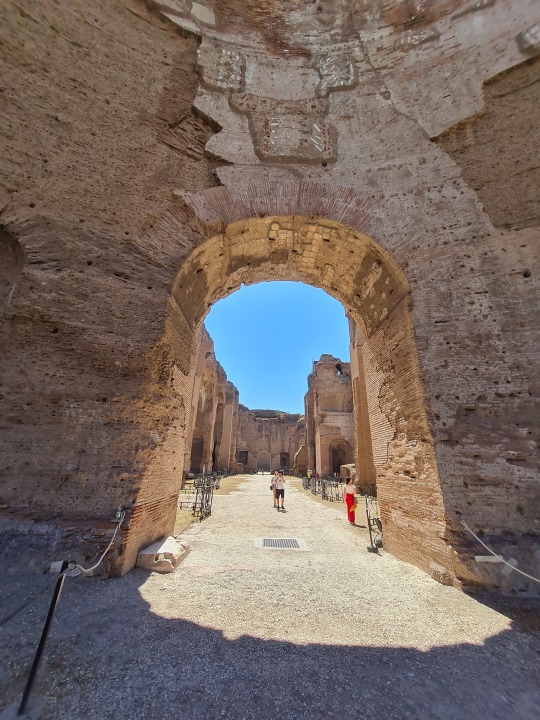


The Baths of Caracalla in Rome, Italy
The thermae were probably constructed during the reigns of the emperors Septimius Severus and his son Caracalla. This was between 211 and 216/217 AD.
#baths of caracalla#ancient rome#roman history#ancient history#ancientmonuments#archaeology#roman empire#caracalla#roman emperor#bath house#roman architecture#rome#roma#italia#italy#rome italy#travel#traveling#travel photography#history#culture#architecture#mosaic#roman mosaic#travel blog#wanderlust#explore#road trip#lazio#original photography
243 notes
·
View notes
Text
Coins of the Deified Augustus, 14-268 CE
The most fascinating thing about these types is how Augustus's portrait changes with the engraving style of the period as his portrait is sort of fused with that of the current emperor.

Divus Augustus Dupondius, struck under Tiberius.
A pretty much unaltered portrait of Augustus, something we won't be seeing often when it comes to these coins. Struck 22-23.

Divus Augustus under Tiberius, laureate head of Tiberius on obverse, laureate head of Augustus on reverse with star above. Struck 14-16.

Divus Augustus under Caligula, struck 37. Bare head of Caligula right on obverse, Radiate head of Augustus right on reverse, two stars to each side of bust.

Divus Augustus, struck in Spain(?) during the civil wars that took place between 68 and 69. Radiate head of Augustus on obverse. Pax standing left and holding a caduceus on reverse.
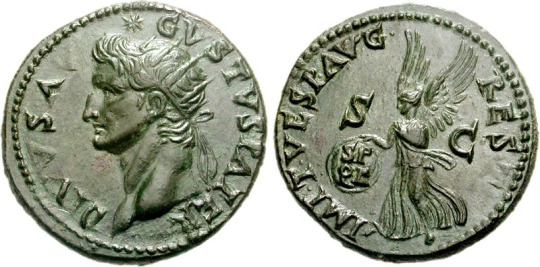
Divus Augustus under Titus (restitution issue that takes the design of that Tiberius Dupondius). Struck 80-81.

Divus Augustus As issued under Nerva (kind of a restitution issue, but not really) Struck 97-98. Eagle perched on thunderbolt on reverse.
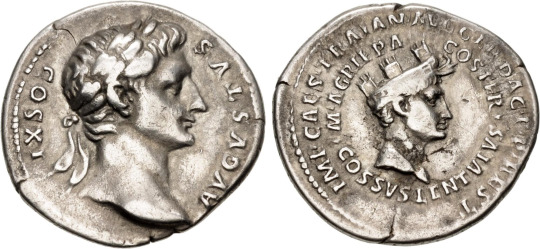
Under Trajan, another restoration issue of one of Augustus's denarii and technically not a Divus issue but I'm still putting here because I like it. Struck 107 or 112-113
Reverse depicts his bestie Agrippa

Cistophoric Tetradrachm struck under Hadrian, 128 (Augustus is literally just a beardless Hadrian here) Reverse depicts Hadrian holding some corn ears.

Skipping forward quite a bit, Divus Augustus Antoninianus issued under Trajan Decius as a part of his "Divus" series of coins. Reverse depicts a lit altar. Struck 249-251.
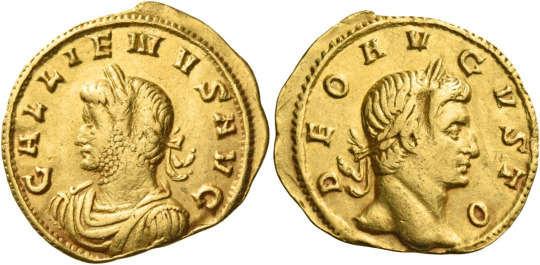
Deo Augusto issue, this one is really interesting as it is *theorized* that this was struck as a way to ask for aid from Augustus the god during Gallienus's disastrous reign. Struck 260-268.
#ancient coins#ancient rome#ancient art#ancient history#roman art#history#roman coin#roman coins#roman empire#roman emperor
78 notes
·
View notes
Text
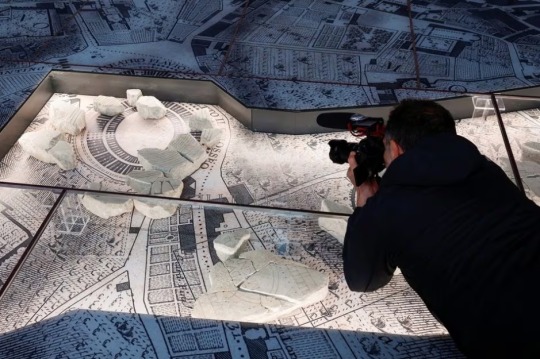

Ancient Monumental Marble Map of Rome on Display After 100 Years
A marble map of ancient Rome, that hasn't been put on public view for almost 100 years, is getting its very own museum within sight of the Colosseum.
The Museum of the Forma Urbis, enclosed within a new archaeological park on one of Rome's famous seven hills opens on Friday -- the latest offering from a city that is eager to broaden its attraction for growing hordes of tourists, according to Reuters.
"This is a beautiful day. We are opening an archaeological park in an extraordinary part of the city and a new museum showcasing a masterpiece which has not been visible for about a century," said Rome Mayor Roberto Gualtieri.
"We want a city where the museums and the streets are linked, and where people, while walking around, can fully appreciate and enjoy the beauty, but also better understand how our city has been transformed."
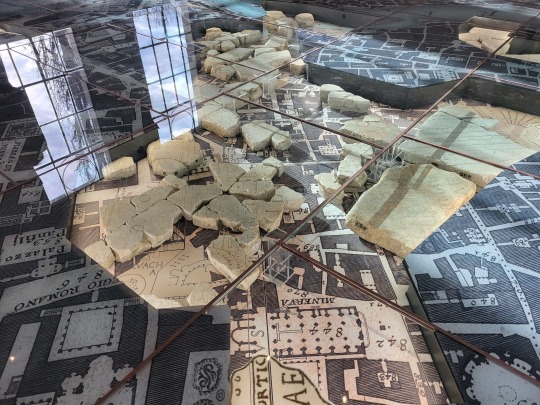

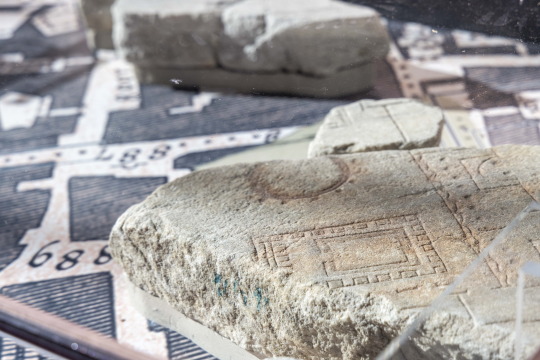
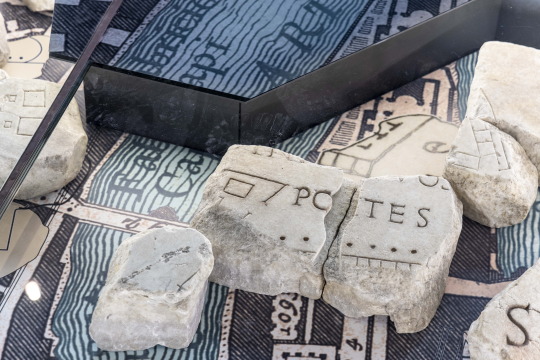

The Forma Urbis was a monumental, highly detailed marble map of ancient Rome carved during the reign of the Emperor Septimius Severus between 203 and 211 AD, engraved onto 150 separate slabs and measuring 18 by 13 metres (60 by 43 feet).
It was displayed on a wall in the ancient city, but over the centuries it gradually disintegrated, with locals using some slabs for new buildings.
During excavations in 1562, fragments were recovered and scholars estimate around 10% of the whole has survived, including sections showing the Colosseum and Circus Maximus, as well as floor plans of baths, temples and private houses.
The huge carving has proved a valuable resource for understanding the layout of ancient Rome, but all the remaining pieces have not been shown together since 1924.
In its new, innovative setting, the fragments have been laid out on a reproduction of a famous map of Rome created in the 18th century by the surveyor Giovanni Battista Nolli, who is credited with making the first accurate street plan of Rome.
The marble chunks lie on top of the Nolli map, showing their relation to the developing Renaissance city.


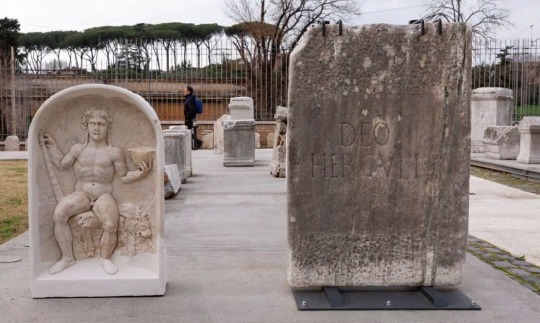

Outside the museum, in the open-air park on the side of the Caelian Hill, archaeologists have out laid out walkways lined with ancient Roman grave markers and marble columns found in excavations around the city in recent decades.
"The Caelian Hill, one of the seven hills of ancient Rome, has remained in the shadows, unknown and inaccessible for a very long time. Today, we are finally giving it back to the city," said Claudio Parisi Presicce, who oversees Rome's cultural heritage.
"The hill has a special importance because it is what unites the monumental area of the Imperial Forums, the Roman forum, the Colosseum and the area of the Appia Antica," he said.
The 5-million-euro ($5.5 million) project is part of a broader refurbishment of Rome, which has seen a tourism boom since the end of the COVID-19 pandemic and is expected to be submerged by visitors in the 2025 Roman Catholic Holy Year.

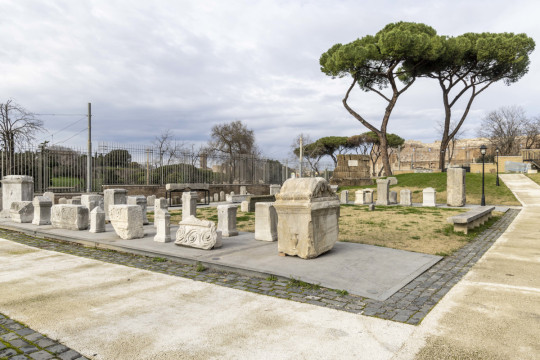
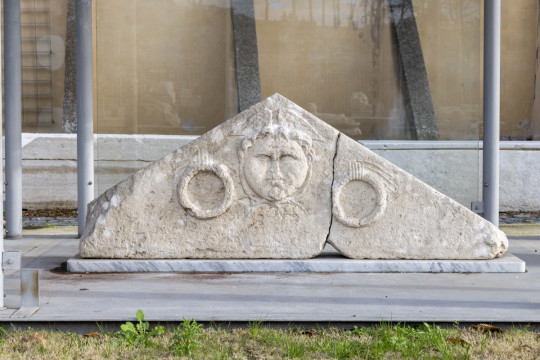

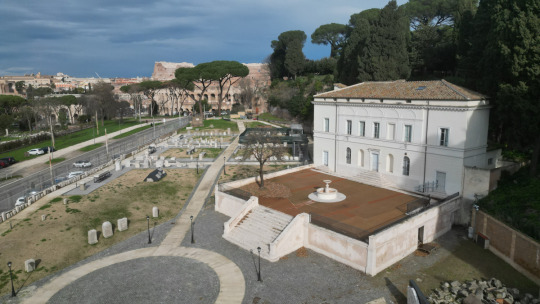
#Ancient Monumental Marble Map of Rome on Display After 100 Years#The Museum of the Forma Urbis#The Forma Urbis#Emperor Septimius Severus#ancient artifacts#archeology#archeolgst#history#history news#ancient history#ancient culture#ancient civilizations#ancient rome#roman history#roman empire#roman emperor#roman art
152 notes
·
View notes
Text
Octavius & Jedediah aka Jedtavius
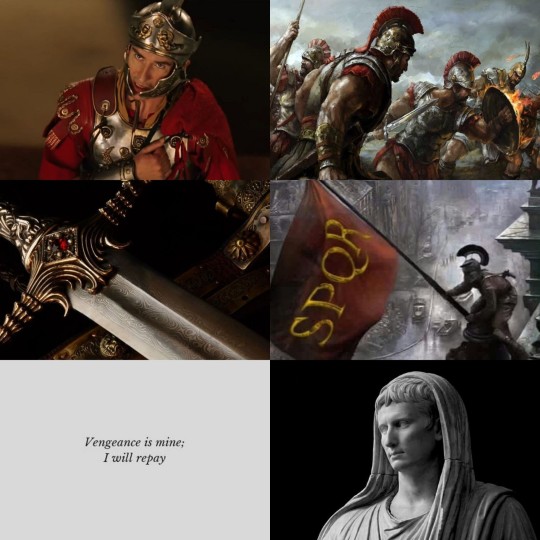

#jedetavius#night at the museum jedediah#jedediah and octavius#jedediah smith#jedtavius#natm jedediah#natm octavius#octavius#natm jedtavius#natm#natm fandom#headcanon: octavius is augustus caesar#aesthetic#moodboard#roman emperor#ancient rome#roman empire#cowboy#night at the museum
69 notes
·
View notes
Text
what do you mean " how often do you think about the Roman Empire" ? bold of you to assume it's multiple times a day and not continuous toughts that have no begining and no end, going on forever.
#roman empire#roman empire trend#how often do you think about the roman empire#history#classic#rome#ancient rome#roman emperor#antiquity#tagamemnon#roman history#ancient history
39 notes
·
View notes